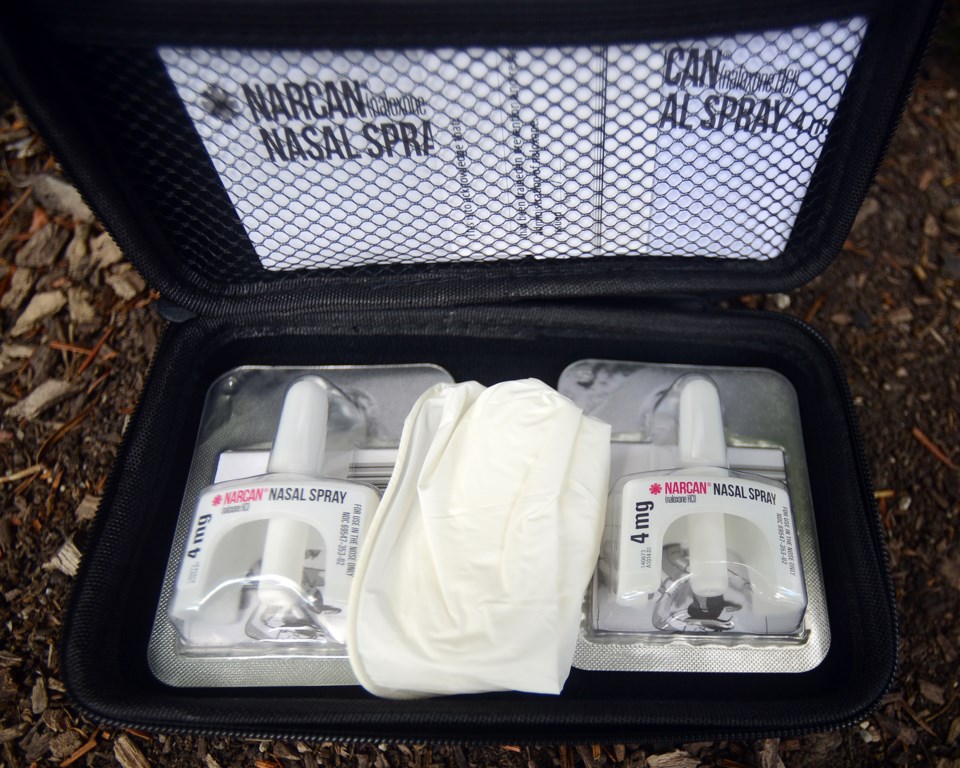Although the most recent data shows death rates from opioid use have tripled in Wellington-Dufferin-Guelph between the 2005 statistics and 2016, the local public health agency says the numbers are relatively low when compared to the rest of the province.
In a recent report, Wellington-Dufferin-Guelph Public Health identified the rate of deaths in the area they service as 4.8 out of 100,000, up over three times from the 2005 statistic of 1.5 out of 100,000.
That represents 14 deaths in Wellington-Dufferin-Guelph in 2016, said Chuck Ferguson, manager of corporate communications for WDG Public Health.
“Those are 14 tragic deaths which we hope would be avoidable in the future,” said Ferguson. “What we can say is there is a definite trend upwards in the number of deaths, so we need to be prepared.”
Although there has been a significant change in the death rate in Wellington-Dufferin-Guelph, Ferguson notes it is relatively lower when compared to the province as a whole.
In 2016, the provincial rate for opioid-related deaths stands at 6.2 per 100,000, almost double the 2005 rate.
In response to the Opioid Crisis, Ontario’s Ministry of Health and Long-Term Care initiated a number of strategies, including the distribution of Naloxone — an opioid antagonist medication used to block or reverse the effects of opioid drugs.
Although Naloxone is not a cure for an opioid overdose, Ferguson said administering the medication can buy a user enough time to get to the Emergency Department at the hospital for further treatment.
“Don’t use alone. If you are going to use drugs use them with someone else so if you do OD there is someone who can call 911 and administer Naloxone,” said Ferguson.
Between August 2017 and February 2018, WDG Public Health and its community partners and agencies distributed a total of 737 Naloxone kits, 185 of which were distributed directly to opioid users by WDG Public Health and ARCH.
You can receive Naloxone directly from WDG Public Health if you are a user of opioid-based drugs, the family of a user or if you are a recently-released inmate, said Ferguson.
“You will get some training on how to spot an overdose, how to deal with an overdose and how to administer the Naloxone,” said Ferguson.
Naloxone is also available for free from many local pharmacies when you present an Ontario Health Card.
Another local increase in relation to opioid use is the number of Emergency Department visits.
“In 2005 there were 45 opioid-related Emergency Department visits, in 2016 there were 98. The trend is going up, clearly. We just need to be able to respond as a community to it,” said Ferguson.
There are other drugs used in our community more often than opioids, notes Ferguson.
“For example, if you look at the harms caused by crystal meth or alcohol use — they often result in personal injury and a lot of social problems. The difference with opioids is the risk of death is much higher, so if you OD on opioids, the risk of death is quite high,” he said.
“You can look to B.C. and other jurisdictions to see how impactful opioids are in a community,” said Ferguson. “We are not going to wait until we are in the situation of some of those other jurisdictions — we are trying to prepare our community to respond now.”
